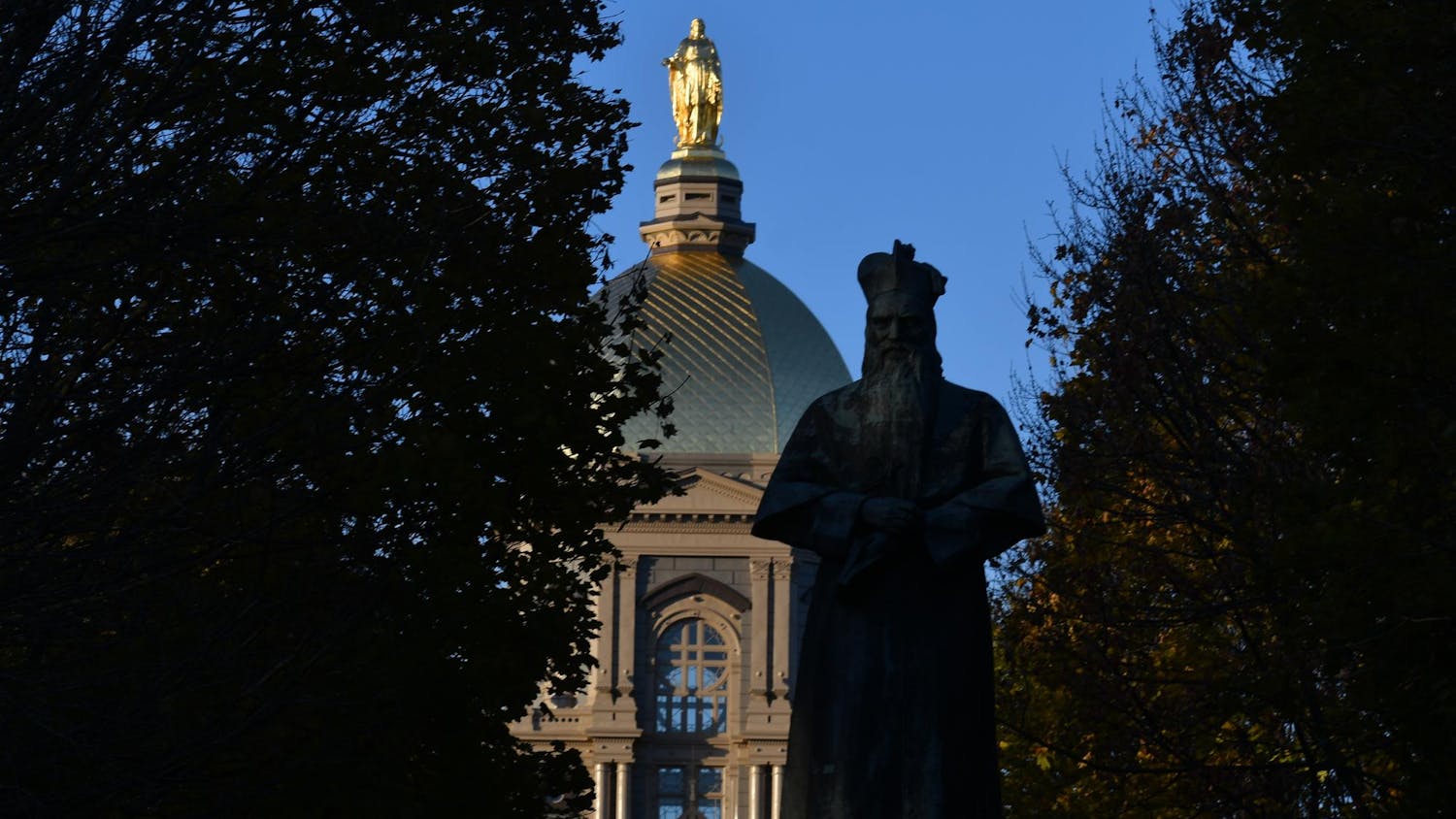Within the second-floor conference rooms of McKenna Hall, the Fitzgerald Institute for Real Estate’s (FIRE) Church Properties Initiative (CPI) hosted its first on-campus conference last week entitled “The Future of Church Property.” Forty-three conference sessions took place, from 15-minute lightning talks to 45-minute panel discussions.
FIRE director Dan Kelly welcomed colleagues from many universities, representatives of Catholic dioceses and other religious denominations, leaders from the nonprofit world and the real estate industry, and Notre Dame faculty, staff and students.
Kelly said that CPI covers properties owned by religious organizations and nonprofits — churches, graveyards, hospitals and parking lots — although FIRE’s work spans all areas in the real estate sector.
“We’re hoping that this conference... can help to advance the ball in terms of research, in terms of education and in terms of real-world impact [for church properties],” he said.
The Catholic Church is the largest non-governmental landowner in the world, according to the FIRE website, with an estimated 177 million acres
Villanova University management professor Matt Mannion led off Monday’s opening panel, addressing the challenges faced by church leaders. Villanova offers the world’s first and only Master of Science in Church Management degree.
“We have an infrastructure that’s built for a time that no longer exists so that we have more properties and facilities than we can potentially use and or sustain,” he said. “The things you own, end up owning you.”
Mannion narrowed the Catholic church property discussion to the diocesan and parish levels, attributing, in certain cases, the cause of financial and mission strain to sex abuse scandals and declining Sunday Mass attendance.
A most glaring example, the Archdiocese of Santa Fe, sold “over 600 church properties” since coming out of bankruptcy in 2018, Mannion said.
In May of this year, the New York Times reported that the $121.5 million settlement involving the archdiocese was “among the top five payouts in abuse litigation involving the Catholic church in the United States.”
In New Brunswick, Canada, the bishop there made a different observation, that “it’s unjust to ask 10,000 people to try and [financially] sustain 31 parishes and all the associated properties,” Mannion said.
Jumping in, Nadia Mian, an urban planner from Rutgers University, spoke to the factors impacting church property managers such as zoning bylaw regulations, historic preservation boards and community activists known as NIMBYs.
Bishop of the Diocese of Fort Wayne-South Bend Kevin Rhoades spoke Tuesday afternoon. Bishop Rhoades was notable among church leaders in attendance as he is in charge of making decisions about diocesan properties.
“I really didn't have a lot of knowledge in this area, nor the data needed for these decisions,” Rhoades said. “Because of my own inclination towards our evangelizing mission, I was often reluctant to close or sell parish buildings and properties and tried to think of creative uses for our facilities.”
Rhoades thanked FIRE for cataloging Fort Wayne-South Bend diocesan property using GIS, or geographic information systems.
“[The] high caliber data that we now have really helps us in our pastoral planning,” he said.
CPI program manager Madeline Johnson explained that GIS is an umbrella term for an ecosystem of tools that use and integrate spatial data, “cartography for the 21st century.”
Johnson said that GIS is used at the diocesan level in inventory and property management.
“Think of it as a series of linked spreadsheets, where you’ve got a [geo-located] shape on the map that defines the property boundary,” she said. “It’s not limited to property management applications. It could be cultural artifacts that are located within the church.”

The number of columns in that spreadsheet is endless, Johnson said. FIRE and CPI add the most recent property appraisals, church or otherwise, into this map.
Johnson also overlays available demographic information such as school enrollment into the data set to inform property management decisions.
“Another capability that is made possible by having property records in this form is that you’re then able to integrate it with a full ecosystem of GIS-based research and tools that exist out in the world,” she said.
South Bend community member Richard Williams asked Bishop Rhoades during a Q&A session after Johnson’s talk to include data from church properties of other Christian denominations in Notre Dame’s GIS model.
“Because this is the universal church,” Williams said, “I would ask that you also, in particular for South Bend, include the other churches because we may be able to show how we can map and pull a city together that has been fragmented for years.”
Williams explained his reasoning for raising this point, saying “I just wanted to offer that as a challenge to FIRE and to the bishop and to Notre Dame.”
Contact Peter Breen at pbreen2@nd.edu.









